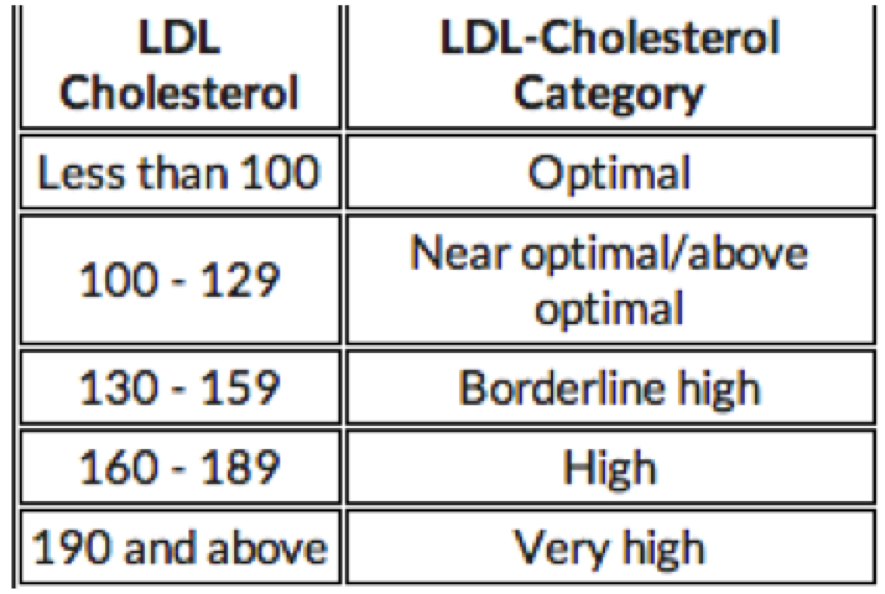
How do I minimize my risk of developing high levels of bad cholesterol? LDL cholesterol: less than 3.5 mmol/L is considered ideal and more than 4.0 mmol/L is high.HDL cholesterol: more than 0.9 mmol/L is desirable.Total cholesterol: less than 5.2 millimoles per litre (mmol/L) Is ideal and more than 6.2 mmol/L is considered high.Health Canada suggests the following as guidelines for cholesterol levels: How do I know if I have high levels of bad cholesterol?Ī simple blood test can determine your cholesterol levels. High levels of bad cholesterol can also be hereditary. Egg yolks and organ meat such as liver are considered very high in cholesterol. Trans fats are also a major culprit, as are foods that come from animal sources such as eggs, meat and some dairy products. Saturated fats raise levels of LDL cholesterol in your blood more than anything else in your diet. If you eat a high-fat diet - especially a diet high in saturated fats - chances are you will have elevated levels of bad cholesterol in your blood. In healthy people, about 80 per cent of the cholesterol that's in the body is produced by the body. Most of it is manufactured in your liver: Your body produces all the cholesterol it needs. HDL cholesterol, on the other hand, is referred to as "good" because it helps carry LDL-cholesterol away from the artery walls, lessening your chances of developing heart disease. If this develops in the arteries leading to and from your heart, you will develop coronary artery disease, greatly increasing your risk of heart attack. The flow of blood is reduced, leading to atherosclerosis. As the plaque builds up, your arteries lose their elasticity and get narrower. LDL cholesterol is referred to as "bad" cholesterol because when there's too much, it promotes the build-up of plaque in artery walls. HDL particles move the other way, returning extra cholesterol to the liver for disposal. LDL particles are carried to body cells from the liver. High-density lipoprotein (HDL) cholesterol.Low-density lipoprotein (LDL) cholesterol.((iStock photo))There are two types of cholesterol: Your body needs cholesterol to make cell membranes, vitamin D and hormones.Ī model of a molecule of cholesterol. It is a type of fat known as a lipid and it is critical for the day-to-day functioning of that collection of cells that is you. What is cholesterol?Ĭholesterol is a waxy substance that occurs naturally in your body. But left untreated, high cholesterol will put you at greater risk of developing heart disease - the No.


High cholesterol is a condition that can be controlled - even reversed - through medication and some simple lifestyle changes. The survey relied on blood samples from about 5,600 participants at 15 sites across the country, taken from March 2007 to February 2009. More than a quarter of people between the ages of 20 and 39 registered high levels of cholesterol. And it's not just an affliction of older adults. 22, 2010, 47 per cent of adults between the ages of 40 and 59 had high levels of total cholesterol, which is a measure of all cholesterol and other types of fats in the blood.Īmong those aged 60 to 79, 54 per cent did. About 41 per cent of Canadian adults have high total cholesterol levels.Īccording to Statistics Canada's Canadian Health Measures Survey released on Mar. ((iStock photo))It's one of those diagnoses you'd prefer not hearing from your doctor: you have high levels of "bad" cholesterol in your blood. High cholesterol levels can lead to a build-up of plaque in the arteries, which can increase your risk of heart attack and stroke.


 0 kommentar(er)
0 kommentar(er)
